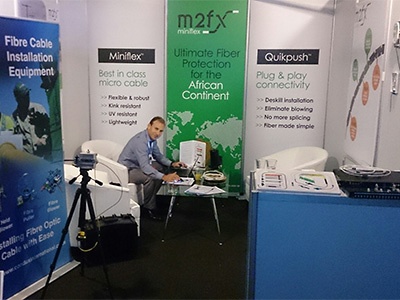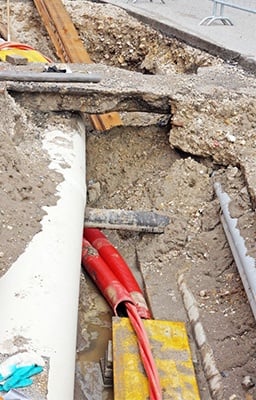 Interest is rapidly growing across the African continent into new fiber to the home (FTTH) ‘last drop’ techniques that turn ‘homes passed’ into ‘homes covered’.
Interest is rapidly growing across the African continent into new fiber to the home (FTTH) ‘last drop’ techniques that turn ‘homes passed’ into ‘homes covered’.
That was the message I took away from the recent FTTH Council Africa Conference in Johannesburg, South Africa. The well-attended event, hosted in the imposing Turbine Hall, was full of presentations and discussions about overcoming implementation challenges and delivering the benefits of fiber to the home networks.
Africa is part way through a transformation when it comes to broadband connectivity. Submarine cables deliver huge capacity to multiple locations around the continent’s coast, but the vast majority of the population is not yet connected. Internet use has grown by a staggering 5320% since 2000 (6 times greater than the rest of the world), but just 21% of the population is online. This is less than half the global average of 43%. Clearly there is work to do, but there is a huge amount being done to bridge this gap.
At the conference there was a real focus on the last drop part of the network, often the largest cost and biggest headache when deploying fiber to the home. I was asked to present on the options and the alternatives that are currently available to operators. This post is a recap of my session and I’m happy to share the full slide deck with anyone interested in more detail. Just leave your details in the comments section below.
FTTH installations: no one single solution
Essentially, there is no one single solution that will meet every FTTH deployment requirement, and operators need to consider such factors as the urban environment, existing infrastructure and population density, as these all impact the choice of installation method.
Consequently, I believe operators should adopt a toolbox approach; working with an array of vendors that can provide a range of solutions to ensure efficient, cost-effective deployments, whether the method is cable in duct, direct bury or aerial. Let's consider each of these potential solutions in turn:
 1) Cable in duct
1) Cable in duct
In urban areas, where there may well be existing infrastructure in the ground, cable in duct can be the most efficient installation method. Ideally, the operator can use existing duct to carry microducts or cable into the property, avoiding the need, expense and disruption of making new excavations. If this isn’t possible, techniques such as microtrenching can be used, to minimize the cutting and digging needed. Pre-connectorized cables eliminate the cost and highly skilled labor needed for splicing, while pushable fiber removes the expense of bulky blowing machines.
2) Direct bury
Like cable in duct, direct bury techniques offer a proven method for last drop FTTH installations. There are multiple suppliers providing products, reducing the purchase cost of components. On paper, direct bury is simple – dig a trench, install the cable and re-instate the surrounding area. However, large scale trenching requires municipal permission and will consume considerable amounts of time and money. Additionally, there is no guarantee that all connected premises will take up the service. Once in the ground direct bury cable is susceptible to damage from unrelated digging activities, and it is difficult to access to repair or upgrade.
3) Aerial deployments
Deploying fiber above ground on aerial infrastructure obviously removes any need for digging, particularly useful when the ground is rocky or undulating. This speeds up installations which means operators can connect customers faster to fiber broadband and start earning revenue more quickly than with cable in the ground solutions. It works well in both urban and rural environments and reduces the labor skills and equipment needed. New products can move the Fiber Distribution Point (FDP) from the ground to the pole, removing the need for manholes or renting site space for ground nodes. All Dielectric Self Supporting (ADSS) cable, for instance, can be deployed close to power lines, allowing the use of current infrastructure.
However, to be cost-effective aerial deployments require access to existing poles, which may be restricted or need to be strengthened. New ultra-light cables, as used by BT in its aerial rollout in Cornwall, UK, can overcome this requirement for pole survey, planning and remedial work. Additionally, as they are exposed to the elements, aerial cables can be damaged by wind, large temperature variations, and even roosting birds.
Each of these three deployment techniques has its own strengths and weaknesses. Going back to the toolbox analogy, different jobs require a screwdriver or a hammer, and they are rarely interchangeable. Given the wide variety of environments where operators are looking to install last drop fiber networks, careful planning and understanding of the costs, skills and time involved is a must before making a decision and pulling out the right tool for the job.


